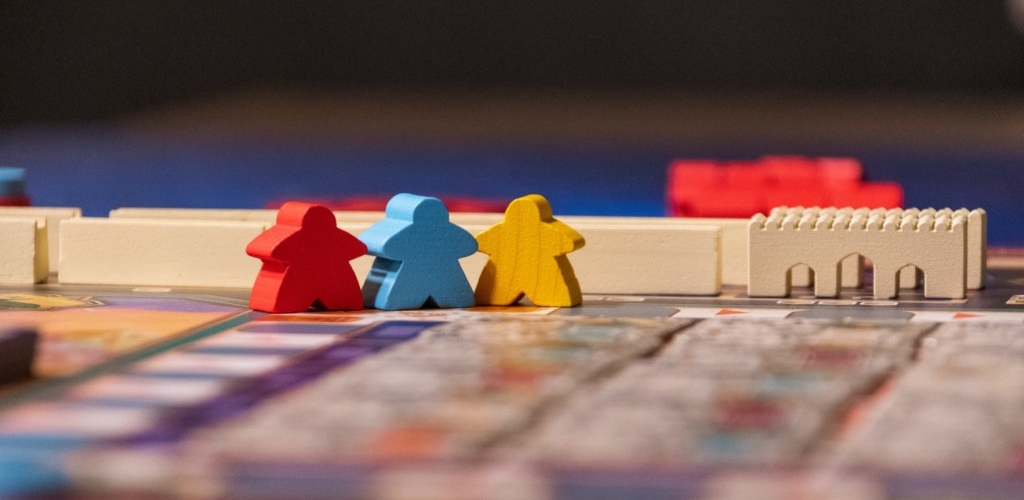A Playful Way to Cultivate Inclusion
Asking students to redesign a childhood game makes the idea of inclusivity more tangible
by LaRissa Lawrie, University Innovation Fellow
Wichita State University ’19; University of Missouri, PhD student
Inclusivity in the classroom is important in order to help us think about other points of view and perspectives. This informs student thinking and their actions, which then direct the ideas, the products, and the things that the students put out into the world.
Educators here at the d.school believe in creating a culture of learning in the classroom that goes beyond the topic or course being taught, and setting the stage for learning and empowering students. They develop strategies and activities for establishing norms and behaviors that are conducive to learning. Inclusivity is one of those norms.
In a recent Virtual Teaching and Learning Studio (vTLS) workshop, the teaching team held an activity called the “redesign a childhood game” as a way to make the idea of inclusivity more tangible. Activity participants pick a game from their childhood and then think of ways the game might exclude someone. Further along, participants ideate with a partner on how to redesign the game to be more inclusive.
Leticia Britos Cavagnaro Ph.D., a member of the teaching team and co-director of the d.school’s University Innovation Fellows Program, says that thinking about who is excluded makes inclusivity more concrete.
“Saying ‘we need to be inclusive’ is sort of abstract,” said Britos Cavagnaro. “If you think about this particular game that has very specific rules then you start thinking about who might have been excluded. Then you start realizing that the game might exclude people with different abilities or experiences.”
In addition to helping participants develop means of inclusion, this activity prompts them to think about other people from different experiences and different contexts through a shared experience. Everyone has been a child and can remember favorite childhood games, and students may not even know the game that the other person is sharing.
The activity can be done easily and simply without any specialized materials. Some faculty who have completed the activity in the vTLS workshop immediately replicated it with their students and with colleagues.

How to run the activity in your classroom
Let’s set some norms that foster learning…
Number of Students: Any
Timing: Approximately 20 minutes. However, this activity can be amended for a shorter time if necessary or over several days by being broken down into different steps. For example, the first step might be to have a student individually think about who might have been excluded. The second step might be to have students consider the redesign, which includes thinking about possibilities, being resourceful and color reframing. It can also be amended for a shorter time if necessary. It can even be done as a short conversation between two people.
Instructor Notes: This activity is something that can be done easily and simply without any specialized materials. It could be run virtually (on Mural, Google slides, etc) or in person (it can be adapted to be done in lots of different classroom setups). It’s helpful to be able to capture what students do and use their work as examples to share in the future.
Step 1: “What is your favorite game?” – Introduction (1 min)
Instructor Notes: Put students into pairs.
Instructions to students: What is your favorite game from childhood? Share with your partner, then select one to work with (don’t spend too much time on this)
Step 2: “Who might be excluded from playing this game?” – Question (3-5 min)
Tools: Sticky Notes
Instructions to students: Who might be excluded from playing this game? Generate ideas on all the ways the game might exclude someone from playing
Step 3: “How might we include more people who were previously excluded?” – Redesign (10 min)
Instructions to Students: Consider one group you identified as possibly being excluded. Now, generate ideas to redesign the game so that they can participate!
Instructor Notes: Sometimes this will look like reframing the game and it can also look like inventing a whole new game with your partner.
Step 4: “Was there something that surprised you?” – Share-out and reflection (5min)
Instructions to Students: As you were doing this activity, was there something that surprised you?
Instructor Notes: Ask students open-ended questions about their experience with the activity.
LaRissa Lawrie is a freelance journalist and writer. She’s currently getting her Ph.D. in Journalism at the Missouri School of Journalism. LaRissa is a Spring 2016 University Innovation Fellow and a 2019 Venture for America Fellow. Follow her on Twitter: @lawriecreative.





Leave a Reply
Want to join the discussion?Feel free to contribute!